What's Wrong With The Wind?
Offshore wind is the best bet for future clean energy and Nova Scotia's next century. But change is hard, people can find fault with anything, and everyone wants their cut. It's time to face the facts
What’s Wrong With the Wind?
Offshore wind power may be the best shot Nova Scotia—and Canada—has at building real, lasting prosperity in the next century. It’s clean. It’s exportable. It plays to our geographic strengths. And thanks to political blunders south of the border and security risks overseas, the door is wide open for Nova Scotia to lead.
But if you’ve heard the objections—about birds, whales, fishing, infrasound, costs, or consultations—you know the pushback is real, emotional, and growing louder. Some of the concerns are valid. Others are echoes of disinformation, amplified by ideology and fear. If we’re going to get this right, we need to face the facts and fight the myths—head on.
I’ve spent 25 years producing films and documentaries about the ocean, science, and technology. I’ve talked with environmentalists, animal advocates, engineers, mariners, scientists, and skeptics. I’ve listened to the critics and visited the sites above, on and below the sea. I’ve seen the wind—what it can do, and what’s at stake.
This essay is a deep dive into the real case for offshore wind in Nova Scotia, and the real objections raised against it.
Here’s what you’ll take away:
Why Donald Trump’s war on wind changed Nova Scotia’s destiny
Why Nova Scotia’s wind resource is world-class, and the opportunity is now
A full breakdown of the six major objections to offshore wind, ranked and dismantled
Contextualized answers to the most common myths about birds, whales, fishing, and infrasound
And finally, the four remaining issues we must solve: economics, the grid, technology, and bureaucracy
You don’t have to love wind turbines. You don’t have to worship clean tech. But if you care about Nova Scotia’s future more than its past—about jobs, sovereignty, prosperity, and having a serious contribution in the new Canadian national project—then you need this information now.
The wind, for once, is blowing our way. And the world is watching what we do next.
This piece brings together six months of focused research, interviews, field notes, and first-hand insight from the 2025 Global Offshore Wind Market conference in London. It connects the dots between global politics, hard science, economic urgency, and Nova Scotia’s once-in-a-century opportunity.
It’s not a quick read—but if you care about where we go next, I think you’ll find something in these chapters that can inform your thinking going forward.
Chapter One: How We Got Here
January 20th, 2025 might have been the most important day in the history of Nova Scotia.
On January 20th, I was watching Donald Trump signing executive orders with… well, to say ‘with great interest’ would not describe it. I was transfixed — appalled, yet I could not turn away. The days that followed were spent in morbid fascination.
This man, whose tariff talk would transform Canada, was unknowingly setting the course for Nova Scotia’s future for the next 100 years.
Among the mountain of executive orders on Donald Trump’s desk that day, his first day in office, was an order to shut down all offshore wind projects being developed in America.
The order cites “various alleged legal deficiencies” in how wind leasing and permitting have been conducted, and alleges that these deficiencies could cause “grave harm” to navigational safety, transportation, national security, commercial interests, marine mammals, and inadequacies in NEPA reviews.
It emphasizes potentially harmful effects on wildlife—including birds and marine mammals—and demands a full federal review of wind’s ecological footprint.
The order expresses concern over "the economic costs associated with the intermittent generation of electricity and the effect of subsidies on the viability of the wind industry".
It flags possible disruptions to ocean currents, wind patterns, energy costs, and especially to the fishing industry.
Now, if you are skeptical of any of the things Donald Trump says. Or if you question the authenticity of his concern for seabirds, whales, and the ecology of ocean currents, you are in good company.
While the memorandum frames itself as an environmental and legal pause, evidence points to deeper political and economic motives. For context, the order arrived on his desk that first day of his new presidential term alongside executive actions accelerating oil, gas, and LNG export approvals—making offshore wind explicitly the odd one out in Trump's renewable policy portfolio. But few were surprised. The order echoed his campaign rhetoric (“Big ugly wind mills… ruin your neighborhood,” “they kill your birds and whales”). Reuters notes that Trump picked up on those themes—lambasting wind as “expensive… harmful to wildlife” without offering empirical evidence. According to The Verge, fossil-fuel interests—who contributed over $75 million to Trump’s campaign—stood to benefit from the rollback. The order directly supports their economic goals.
The move rattled wind developers (like Orsted, whose shares plunged ~17 %), and sowed uncertainty—even halting projects that were mid-development in New York.
With no clear endpoint for the moratorium, this review effectively stalls or kills offshore wind indefinitely. The order dovetails with Trump’s broader deregulation and energy agenda, reminiscent of his rollback of environmental rules, including weakening NEPA enforcement.
On paper, Trump claimed the move was about addressing legal loopholes, protecting wildlife, and checking economic prudence. But all signs point to a political decision born not of conservation or compliance—but of ideology, oil & gas favoritism, and hefty donor dollars. The purported review is a smokescreen for a policy undercutting renewables and upping fossil fuels.
Though known for his flip-flopping on decisions, only the New York project, which had already been about 30% completed, got a reprieve. In the six months since, this is one file Donald Trump hasn’t revisited.
What did Trump’s Shutdown Order Cost?
According to industry sources and financial press, the moratorium affected ~60 GW of offshore wind capacity in planning, leasing, or pre-construction phases.
Based on current global benchmarks, offshore wind development averages $3–5 billion per gigawatt of installed capacity.
Based on existing project data (Empire Wind, Vineyard Wind), each GW generates about $5–7 billion in lifetime value over 25 years, including:
Electricity sales
Supply chain/local economic impact
Tax and lease revenue
Maintenance and operations jobs
Taking middle estimates, the cost looks something like:
These numbers are not speculative—they’re consistent with known values for current projects, scaled to capacity. This doesn’t include potential knock-on effects such as:
Port infrastructure upgrades,
Long-term workforce development,
Power price stabilization,
Carbon emissions avoided.
Trump’s offshore wind moratorium put an estimated $240 billion in investment and $360 billion in long-term economic output on indefinite hold.
Meanwhile In Norway…
While Trump was shutting down American wind projects, Nordic and Scottish offshore wind producers, long leaders in the new field, were facing their own problems.
Subsea wind assets and interconnectors in the North Sea and Baltic are considered critical infrastructure vulnerable to hybrid warfare. Russia—often operating via plausible deniability—is deliberately mapping cables and energy installations in the Baltic, Arctic, and North Sea.
Sweden canceled 13 planned Baltic Sea windfarms after defense assessments concluded turbines would hinder naval defense and could compromise sensor networks—highlighting the perceived national security risk of offshore wind in contested waters.
Geopolitical security risks posed by Russia and political uncertainty aren’t making headlines, but threats to offshore assets and cables are enough to get the attention of bankers, insurers, risk managers, and project planners - pushing up costs and making long term plans more uncertain.
What Does This Have To Do With Nova Scotia?
In the months since Donald Trump’s inauguration, readers of THE BEE will have been following along with this developing story.
I Found a Real Treasure Map in Nova Scotia and It's Worth Billions
There are moments in history when a place that’s been overlooked, underestimated, or simply out of the way suddenly finds itself at the centre of something big. This is one of those moments for Nova Scotia.
Nova Scotia’s Premier, Tim Houston
After a historic election win who continues to be among the most popular premiers ever in Nova Scotia and most popular politicians in the country, made a difficult choice. If Nova Scotia was to contribute to the Canadian project, if we were going to create the wealth required to pay for the future we want, if we were going to lift ourselves off the very bottom of the economic ladder that has Nova Scotia with the lowest GDP per capita of any province, state, or territory in North America — that sets it apart of as the poorest, least, productive, province — or if Nova Scotia is to have any future at all, we have to find some way to sustainably create the wealth needed to realize the prosperity, progress, and opportunities we want.
So he put everything on the table: natural resource extraction, uranium, fracking, lithium, minerals, gold… everything. Including offshore wind.
Now, as Canada Day approaches, Nova Scotians have had the time to think, talk about, and choose between these options. THE BEE has done its own research, analysis, and ranking.
Nova Scotia’s 13 Economic Opportunities: Ranked from Pipe Dream to Power Play
THE BEE is buzzing up on 1,000 subscribers around the town and seeing 15,000 to 30,000 readers a month, which is coming close to “a modest success” banner at the end of its first year of consistent writing. If you’ve enjoyed reading these painfully long essays about the same old stuff
SIDEBAR: The Nuclear Option
Nova Scotia - The Offshore Wind Capital of the World
What you are looking at is a wind map of North America.
Nova Scotia has the most steady and strong offshore wind, in the most shallow waters, nearest to shore, and closest to the largest energy markets in the world. No one else comes close.
Chapter Two:
The Case For Nova Scotia Wind
Nova Scotia’s offshore wind future is both promising and urgent.
1. Nova Scotia Has World-Class Wind Resources
Consistent, high-velocity wind off the Scotian Shelf rivals or exceeds that of the North Sea and Atlantic U.S. coast.
Deepwater and floating turbine tech is well-suited to Nova Scotia’s foreshores.
Wind near to shore reduces cable length and infrastructure cost.
Unlike the Gulf or California, NS is not as cyclone-prone—lower long-term weather risk.
2. Close to Huge Export Markets
Within 1,000 km of New England and the Northeastern U.S.—the highest priced and most power-hungry energy market in North America.
The new Canadian government energy and infrastructure plan is designed to need the energy Nova Scotia can produce and support the projects needed to build it.
NS also near European shipping routes; future hydrogen/ammonia exports could feed EU demand for green fuels.
NS wind could be converted to clean hydrogen/ammonia and shipped via ports newly developed Eastern Shore ports.
3. Trump’s Wind Shutdown Creates a Vacuum
Over $240 billion in U.S. projects stalled or cancelled due to federal permitting moratorium.
U.S. developers may now look to offshore-friendly jurisdictions to pivot projects and retain capital.
Nova Scotia’s regulatory clarity, combined with Canada’s GHG targets, could attract capital fleeing U.S. instability.
Exporting clean energy to the U.S. could serve demand without needing their permitting chaos.
4. Baltic & North Sea Risk Pushes Investment Elsewhere
Northern Europe’s wind leaders (Scotland, Sweden, Denmark) now face national security concerns over Russian sabotage, cable attacks, and drone mapping.
Sweden cancelled 13 wind projects in the Baltic due to defense concerns—creating renewable supply uncertainty in Europe.
Financiers and insurers are hiking premiums in the Baltic & North Sea, while Northwest Atlantic sites like Nova Scotia are relatively low-risk.
NS offers geopolitical and geographic stability—ideal for de-risking green portfolios.
5. Wind Power is Coming Into Its Own
Floating turbine tech now proven (Equinor’s Hywind, Principle Power's WindFloat), opening new areas like Nova Scotia’s deepwater sites.
Cost curves are improving: even with recent inflation, offshore wind remains competitive with fossil fuels and more predictable in price.
Long-term power purchase agreements (PPAs) and green hydrogen credits make wind bankable.
NS can lead the second wave of wind adoption—learning from Europe’s expensive first wave.
6. Nova Scotia Needs New Engines of Wealth
Traditional sectors (fisheries, forestry, farming, mining, pulp) are in long-term decline or ecologically constrained.
We must have some sustainable source of wealth to fund our future and our hopes for progress and prosperity.
Offshore wind could be our oil sands—but clean: large-scale, export-driven, jobs-intensive, and regionally transformative.
Other economic ideas (tech hubs, crypto, cannabis, tourism) have limited scalability or sustainability, and Nova Scotia has no competitive advantage in any of these areas.
Wind aligns with NS’s natural advantages: geography, grid connectivity, shipbuilding & engineering expertise, marine research base (Dalhousie, Bedford Institute).
A sovereign wealth fund or long-term lease strategy could turn royalties into intergenerational wealth.
Other Points to Strengthen the Case
Grid modernization funding is available through federal and international programs—wind development can unlock that capital.
First-mover advantage in Canada allows NS to become a wind technology testbed and export hub.
Local supply chains (steel, cable, ports, trades) could be scaled to support projects across the North Atlantic and create both good jobs and businesses as well as the kind of industrial base Canada needs to build its future.
Climate policy alignment: NS wind helps Canada meet its Paris commitments while growing GDP.
What’s Wrong With The Wind?
Chapter 3
The Objections
Donald Trump has a lot of influence. He has the mic. And like it or not, when he speaks—into that gold-plated bullhorn of his—ideas scatter. A lot of the ideas he tosses around get out into the world like dandelions blowing on a spring day and seed in the most unexpected places.
So when Trump says wind turbines are ugly, expensive, bird-killing monstrosities that make whales crazy and ruin the view from Mar-a-Lago, you’d be surprised how far those words travel.
And once they’re out there—half-formed, half-true, and fully emotional—they take root. You start to hear wind objections from fishermen, retirees, TikTokers, planning staff, grifters, and people who are just worried — literally sick and tired, and fearful of what other dumb thing is coming next. The objections mutate and multiply. They become “common sense.” And that’s when good policy goes sideways.
But let’s take the objections seriously. For all the noise, some of the concerns are rooted in real-world complexity. Others are rooted in sentiment, suspicion, and selective science.
I’m not going to repeat Donald Trump’s rants. Here’s my best accounting of the actual objections that Trump’s tirades trade on. Arguments against offshore wind power come from a variety of perspectives—economic, environmental, technical, aesthetic, and political. Here's a breakdown of the main categories and their most commonly cited points:
1. Economic Arguments
High upfront costs: Offshore wind farms require significant capital investment—often billions—due to specialized turbines, underwater cabling, and marine construction challenges.
Subsidy dependency: Critics argue that offshore wind projects are not economically viable without government subsidies or guaranteed power purchase agreements, which can distort markets.
Intermittency cost: Wind is variable. Integrating large amounts of offshore wind into the grid requires backup power sources (usually gas) or expensive storage, increasing overall system costs.
Ratepayer burden: In some jurisdictions, offshore wind has led to higher electricity bills for consumers, especially when governments lock in above-market prices through long-term contracts.
2. Technical and Infrastructure Concerns
Grid connection limitations: Offshore wind often requires new transmission lines or upgrades to existing infrastructure, which can be delayed by permitting issues or NIMBYism.
Maintenance complexity: Offshore turbines are harder to access than onshore ones, leading to longer downtimes, especially in harsh marine environments.
Limited lifespan: Saltwater corrosion and weathering can reduce the operational life of components and increase maintenance costs.
3. Environmental and Ecological Concerns
Marine habitat disruption: Construction and operation can disturb seabed ecosystems, fish spawning grounds, and migratory paths of marine mammals.
Bird and bat mortality: Turbines can kill seabirds and bats, particularly during migration seasons. The impact is site-specific but can be significant in some regions.
Noise and electromagnetic fields: Underwater noise from pile-driving and EMFs from cables may affect marine life, especially sensitive species like whales and eels.
4. Aesthetic and Tourism Objections
Visual pollution: Turbines visible from shore can alter natural coastal vistas, which some locals and tourists find objectionable.
Tourism impact: Coastal communities worry that offshore wind farms may deter visitors who value pristine seascapes.
5. Political and Geopolitical Issues
Local resistance: Coastal residents, fishers, and Indigenous groups may oppose projects over consultation, sovereignty, or livelihood concerns.
Strategic vulnerability: Some argue that offshore wind farms could be targeted in cyberattacks or conflict scenarios, given their centralized infrastructure and dependence on digital controls.
Foreign ownership: Nationalists or economic protectionists may object to foreign firms controlling critical energy assets.
6. Opportunity Cost and Land Use Tradeoffs
Better alternatives?: Critics sometimes argue that money spent on offshore wind would have greater impact if invested in nuclear, geothermal, hydro, or even efficiency and conservation.
Overreliance on wind: A diverse mix of energy sources is often more stable and resilient than depending heavily on one intermittent source.
These criticisms don't universally apply to all offshore wind projects—but they do form the core of opposition narratives, particularly where projects are large, visible, or politically sensitive.
I’m going to go through these objections as a countdown to their seriousness, addressing each on in detail.
4. Offshore Wind is Killing the Birds
Why Offshore Wind Is Relatively Low-Risk to Birds
Siting practices matter. Turbines are placed away from major migratory routes and bird hotspots, guided by detailed avian radar and ecological studies.
Fewer species offshore. Most birds are coastal or land-dwelling; relatively few species spend significant time over open ocean.
Avoidance behavior. Many seabirds have been shown to detect and avoid turbines, especially in daylight.
What About Protected or Rare Species?
That’s the strongest part of the argument: even one death of a vulnerable species like the Roseate Tern or a migratory eagle can be significant if the population is small. That’s why:
Environmental impact assessments (EIAs) are legally required and must demonstrate minimal impact.
Monitoring and mitigation (e.g., turbine shutdown during peak migration) are often built into approvals.
Wind Power Helps Birds in the Long Run
Birds—and all wildlife—face an existential threat from climate change. Habitat loss, shifting food chains, and extreme weather pose far larger, more systemic dangers than turbines.
According to the Audubon Society, which is a bird conservation organization, supporting wind energy is part of a long-term bird protection strategy.
Offshore wind turbines may kill some birds—but:
The numbers are extremely low, especially compared to other human activities.
Careful siting and monitoring drastically reduce the risk.
The long-term benefit of decarbonizing energy far outweighs the localized, manageable impacts.
If birds had a lobby group it would be against cats and glass tower office buildings, not offshore wind turbines.
“Audubon strongly supports wind energy that is sited and operated properly to avoid, minimize, and mitigate effectively for the impacts on birds … To that end, we support the development of wind energy to achieve 100% clean electricity.”
3. Offshore Wind is Killing the Whales
Construction Noise (Pile-Driving):
Noise can cause behavioral changes—temporary avoidance, altered calling, or stress—but there's no evidence linking pile driving or construction to whale deaths
Regulatory agencies, including NOAA Fisheries and the Marine Mammal Commission, have investigated and found no causal link between offshore wind activity and whale mortality
The next generation of offshore wind will be built on floating platforms, eliminating construction noise and solving end of life equipment disposal — they’ll simply be floated away for reuse, restoration, and recycling.
Operational Phase (Turbine Presence):
Once built, turbines emit minimal underwater noise. Studies suggest impacts are localized and short-lived
Ocean Hydrodynamics / Feeding Ecology:
Some theoretical concerns exist that turbine arrays could alter currents and nutrient flows, impacting plankton—and thus whale prey
But the National Academy and others note changes will be indistinguishable from natural variability, and that foundational research is ongoing
What Whale Protection Groups Say
NOAA Fisheries and BOEM mandate environmental assessments, enforcement of noise limits, seasonal shutdowns, real-time monitoring, and required mitigation measures
The Marine Mammal Commission states clearly: “no evidence linking site preparation work for offshore wind farms with the recent whale deaths along the U.S. East Coast”
Whale & Dolphin Conservation USA notes that potential impacts from construction are mitigated through careful planning and monitoring, and they engage with developers to ensure best practices
Conservation groups like Save the Whales have urged caution and more density in siting processes, concerned by early lease plans overlapping with whale habitat —but their focus is on alignment of habitat maps and lease areas, not claiming direct turbine-caused mortality.
The Real Threats to Whales (And Why Wind Isn’t One)
Ship strikes from fast-moving ships, fishing gear entanglements, and climate change impacting feeding and breeding habitats are the threats to whales in the modern world.
Whale expert Dr. Mark Baumgartner warns that climate change–altered prey dynamics pose a far greater existential threat to species like the North Atlantic right whale .
No documented whale fatalities tied to offshore wind build-out.
Whale groups engage constructively: supporting science-led approaches rather than blanket opposition.
Meanwhile, climate change and human encounters at sea (ships, gear) threaten whales far more acutely.
In context, offshore wind presents a managed, minimal, and localized risk—dwarfed by its benefits to combating climate change and safeguarding whale habitats in the long run.
2. The Fishing Industry's Anti-Wind Arguments
Some offshore fishing groups claim:
Turbines interfere with navigation and radar.
Arrays complicate trawler access and create “no-go zones.”
Cables and foundations disrupt fishing grounds and bottom habitat.
They weren't consulted adequately or fairly compensated.
These are not entirely fabricated concerns—but they lack proportion, and more importantly, they ignore the damage industrial fishing does on its own.
Bottom Trawling: The Real Wrecking Ball
Destroys seabed ecosystems, flattening habitat like a tank rolling over and destroying everything on the sea beds. It’s a ‘harvesting’ strategy akin to cutting down the apple trees to get the apples.
Stirs up carbon buried in the ocean floor—some studies say bottom trawling is the ocean’s largest human-driven carbon disruptor.
Leaves vast dead zones, wiping out biodiversity and spawning habitat.
So when trawlers say offshore wind damages the seafloor, they’re really working to keep people away from understanding more about the damage they are doing in an ocean that was previously out of sight and out of mind, for most citizens.
Turbines as Habitat: Artificial Reefs and Marine Refuges
Fixed-bottom turbines (and mooring anchors for floating ones) create complex structures that quickly become home to mussels, crustaceans, and juvenile fish.
Studies in the North Sea and off Denmark show increased biomass and diversity around turbine foundations.
Some areas become de facto marine protected areas, shielding key breeding and nursery grounds from trawling and other high-impact activity.
Over time, this can replenish nearby fisheries—a classic spillover effect.
So for line fishers, pot fishers, and small operators, this can be a win. It’s mostly industrial draggers who lose access.
Floating Turbines: The Future Sidesteps the Issue
Floating turbines are anchored far offshore in deep water, well beyond most trawling zones.
Their flexible mooring systems and cables minimize seabed disruption.
They unlock vast new wind zones far away from coastal conflict—but still deliver power to the grid via undersea cable.
Floating wind makes many of the traditional fishing complaints obsolete, yet some factions still resist out of habit, fear of precedent, and fear of exposure of their own bad practices.
What’s Really Behind the Pushback
Territoriality: Fishing groups often react like a kind of gang. Any new player in “their” ocean is met with resistance, even if there’s little actual overlap.
Political leverage: Fishermen, like other big industrial businesses, punch above their economic weight in politics.
Compensation pressure: Some groups protest hard to negotiate for subsidies, offset payments, or shared revenue.
The claim that offshore wind harms fishing is often more about control than conservation. And when bottom trawlers make that claim, it’s the fox suing the fence for keeping it out of the henhouse.
In truth, responsibly sited offshore wind—especially floating—can:
Improve fish habitat
Restore marine biodiversity
Shield critical zones from destructive industrial practices
It’s not just a climate win. It’s a fisheries regeneration opportunity, if we can get past the noise.
1. Infrasound is Driving us Mad.
What Is Infrasound, and Do Turbines Produce It?
Infrasound = sound below 20 Hz (too low for humans to hear).
Yes, all rotating machinery produces some infrasound, including cars, boats, HVAC systems, Im looking at you Heat Pumps, and yes—wind turbines.
But offshore turbines are many kilometers away, and the water and air between them and you is really loud.
The Ocean Is Really Loud
The sea is a cacophony of sound. Think back to the last time you were at an open ocean beach on the North Atlantic. What did you hear?
The Whale Argument: Does Infrasound Mess Them Up?
Whales do use low frequencies—but they're used to a booming ocean.*
No evidence has linked turbine operational noise to changes in migration, feeding, or beaching.
Ship traffic, sonar, and seismic exploration are the true threats—orders of magnitude louder and more chaotic.
Studies consistently show whales adjust behavior around sustained noise but aren’t disoriented by it unless it's sudden, sharp, or military-grade (think airguns or sonar pings).
The Bird & Human Angle: Wind Madness?
Some claim infrasound from wind turbines causes headaches, anxiety, insomnia, and even suicidality.
However, this is the domain of the “nocebo effect”—when belief in harm produces real symptoms.
Multiple peer-reviewed studies (e.g., Chapman & St. George, 2013) have shown no link between turbine sound and health when people don’t know there are turbines nearby.
As for birds: the biggest killers are windows, cats, cars, and habitat loss. Not subtle vibrations from distant turbines.
Fringe Theories and the "Global Harm" Argument
Some conspiracy-tinged critics suggest infrasound from wind farms “damages the Earth’s magnetic field” or “resonates with human organs.”
These ideas draw from outdated or misinterpreted Soviet-era research on ELF waves and lack credible scientific support.
Real geophysical disturbances—like undersea mining, deepwater blasting, or seismic drilling—are far more disruptive.
Our Contextualized Case
Operational offshore wind turbines do produce sound—but:
That sound is minor compared to ships, storms, surf, and natural underwater processes.
It is well within biologically normal ranges for whales, birds, and humans.
There is no credible evidence linking turbine infrasound to ecological or psychological harm.
Most claims rely on anecdotes, fear, or poorly-controlled studies—not peer-reviewed science.
If you're worried about infrasound ruining the planet, worry first about container ships, oil tankers, fishing boats, and most of all beaches where crashing waves have ceasely created similar sounds since the earliest history of the planet. Offshore wind turbines are background noise in comparison—the kind that, if anything, might lull the sea to sleep, not drive it mad.
But there are even louder sounds in the ocean. Uncontroled roaring and all frequencies across what animals hear and far beyond.
The seabed itself is not still or quiet like the earth on land. It's an underwater percussion section: sand hissing, stones grumbling, creatures scraping, and waves rolling heavy drums. Everything is moving all the time. Those lost treasures don’t bury themselves. Offshore wind turbine sounds don’t happen in a vacuum—they’re entering a space that’s already full of natural noise, much of it louder and more constant.
So when critics cite turbine “infrasound” as disruptive, they’re ignoring this truth: the ocean was noisy long before we got here. And nature’s orchestra has always included a rocking bass that puts any car stereo sub woofers to shame.
But do you know what’s really noisy? The Bay of Fundy!
And do you know who really loves the Bay of fundy? Whales!
The Bay of Fundy, with its record-breaking 12–16 metre tidal range, isn’t just a marvel of hydrodynamics—it’s a natural rock and roll show. Twice a day, always changing, it goes off as the tide rises and falls twice in every 24 hours. And yet, it remains a thriving habitat for multiple whale species, including endangered North Atlantic right whales, humpbacks, minkes, and fin whales.
So: how much noise does the tide make in Fundy? Let’s break it down.
What Makes Noise in the Bay of Fundy Tides?
Fundy’s soundscape is generated by several intertwined forces:
Tidal bores and surges: As massive volumes of water rush into narrow inlets and estuaries (like the Shubenacadie River), they generate low-frequency rumbles, whitewater roaring, and seafloor abrasion.
Sediment transport: Fundy’s famously muddy and gravelly bottom gets stirred up with each cycle, grinding and scraping like a natural rock tumbler.
Turbulence and eddies: The chaotic vortices formed by tidal currents create constant underwater rumbling, especially in constricted areas like the Minas Passage.
Breaking waves and cliff echoes: Coastal cliffs reflect wave energy back into the bay, layering on more sound
Acoustic Power: How Loud Is It?
Ambient underwater noise in turbulent tidal zones often measures 120–140 dB.
During extreme flows (e.g., Minas Passage at peak tide), it could spike to 150+ dB, especially near the seabed.
A 150 dB sustained sound is extremely loud—right on the threshold of what's physically tolerable without causing immediate and lasting harm. It's not something humans typically experience outside of extreme or artificial environments.
Here are some real-world human-scale examples to give you a visceral sense of it:
A hand grenade blast
A jet Engine at full throttle
Inside a rocket launch pad enclosure
And it’s worse underwater:
150 dB in air is brutal.
150 dB underwater is even worse—because water transmits sound more efficiently and enters the body more directly, affecting tissue and bone.
So Why Do Whales Love the Bay of Fundy?
Despite the racket:
Whales evolved with it. They know when and where the tide is coming, and adjust their calls and movements accordingly.
Fundy’s turbulence creates rich feeding zones, especially where krill and fish get trapped or funneled by currents.
Many species (especially right whales) appear to prefer the natural noise of high-energy, prey-rich zones over the sterile quiet of deeper ocean.
In fact, some research suggests that natural low-frequency sound helps whales navigate, not hinder them—like sonar off a canyon wall.
Nature Already Roars in all through the ocean and especially in Nova Scotia
The Bay of Fundy’s tides produce an underwater soundscape that is:
Louder and more dynamic than operational offshore wind turbines,
Natural, predictable, and biologically useful, and
Unproblematic for whales who’ve evolved in step with its rhythms.
In Fundy, nature shouts—and the whales come back every year to listen.
A lot of the objections aren’t about wind at all. They’re about change. About who gets to decide. About visibility and control and fear that the world is shifting under our feet—and someone else is profiting.
That’s why Trump’s rhetoric sticks. Not because it’s technically accurate. But because it plays on feeling displaced in a world that’s moving too fast. And wind turbines—big, white, foreign-looking, and new—become lightning rods for that feeling.
But facts still matter. And so does leadership. We need to separate myth from mechanics, opinion from outcome. We’re not waiting for the wind to be perfect—but recognizing, after careful analysis that it’s better than the alternatives.
And it is.
But What About The Other Issues?
The Grid, Economics, Technology, and Government
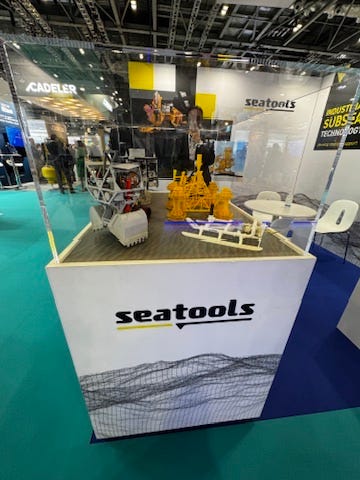



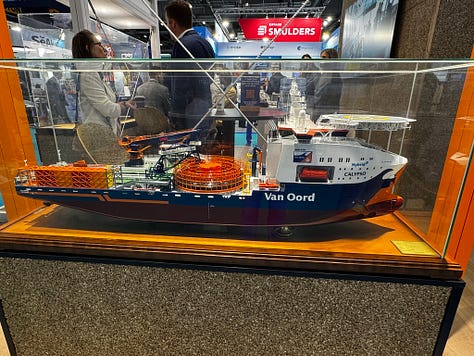
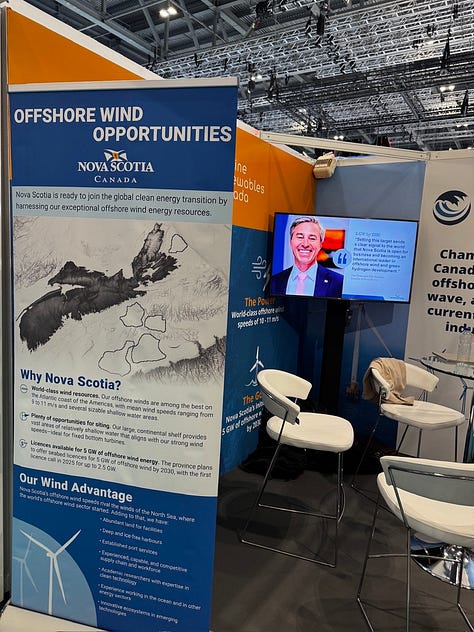
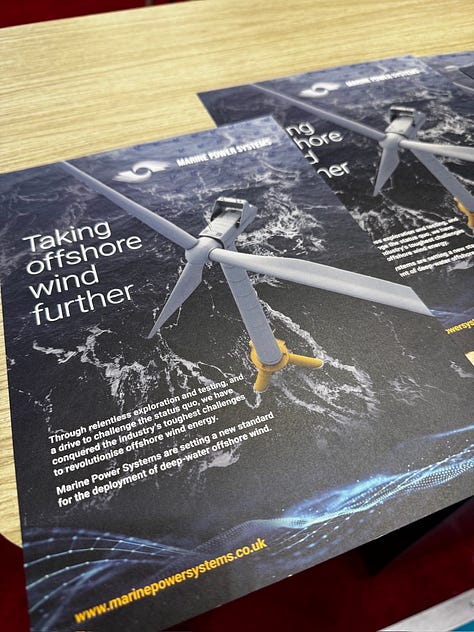


Notes from London: Inside the 2025 Global Offshore Wind Market
I’ve just returned from the 2025 Global Offshore Wind Market in London—a whirlwind of ideas, deals, tech, and cautious optimism. It’s the kind of event where companies now wear green recyclable lanyards and phrases like “interconnectivity,” “floating platforms,” “sustainable”, and “sovereign resilience” can be heard in any conversation.
All industries are struggling. Some to survive. This one is struggling with how big, how fast, how awesome, and how far into the future we can plan for. And across it all, “where are we going to find the people to fill these exciting and interesting new jobs exploring the future of energy?
There were no protestors. Just the kind of people who work around the sea and in ships. People who are independent, with deep knowledge and respect, people who build, create, repair, and imagine. And there were bankers, investors, engineers, project developers, and government delegates from around the world—because offshore wind has officially moved from idealism to industry.
A few takeaways stuck with me:
Floating turbines are real, and scaling fast. What was a prototype two years ago is now in commercial design.
The U.S. has lost the room. Trump’s offshore moratorium has paused or killed momentum. Everyone's watching where that capital will go next. Canada—especially the East Coast—is suddenly very interesting.
Grid is the new gold. Everyone agrees: Transmission and export corridors are the real bottleneck—and the real opportunity. And one thing is for sure. No one is interested in the old-time wire and pole power companies. They’ve had their day and taken more than their share.
Canada is respected, but not seen as serious. Our resource potential is undeniable. But our bureaucracy, consultation culture, and permitting timelines are a dating red flag.
I had dozens of conversations—from hardcore Scottish offshore workers, to Norweigian manufacturers, Dutch shipbuilders, and London city financiers—that reminded me how quickly this industry is evolving. I’m convinced, if we show up with confidence, we can lead.
Nova Scotia has highest Atlantic winds, most sustained winds, closest to shore, in the most shallow water, and a Canadian government ready to commit to new sources of energy with certainty for the long term. It’s a secure and stable ‘blue ocean’ opportunity with almost unlimited room to grow, and inimitable, efficient access to North America’s largest energy markets.
Nova Scotia isn’t a footnote. It’s a frontier. And it’s the future.
Economics: Who Makes the Money?
Offshore wind isn’t cheap—but done right, it will create tremendous amounts of wealth. The income should be split — going to whoever builds, owns, maintains, and sells the power. That could be foreign utilities... or us. The question isn’t whether offshore wind is profitable—it’s who gets the profits. Nova Scotia can choose to be a passive landlord or a power player. Public ownership and investment, sovereign stakes, export contracts, equity for citizens—it’s all on the table. But only if we show up.
The Grid: You Can’t Sell Power Without a Road to Market
You can’t just plug a windmill into a wall and call it a day. Nova Scotia’s current grid is a rickety regional system, not a gateway to global energy markets. We need a real connection to the continent—a high-voltage superhighway to Ontario, Quebec, New England, and beyond. That’s where Ottawa steps in. The feds built the railroad, the Trans-Canada Highway, and the internet backbone. This is the next national build-out. Without it, we’re just whistling in the wind.
Technology: It’s the Early Days of a Giant
Offshore wind is still in its Wild Wild West, er, East phase. Everything is new. The best tech—high-output floating turbines in deep water—is only just coming online. It’s like computers in the ‘80s or smartphones in 2007: the first movers don’t get it perfect, but they get ahead. Nova Scotia has the geography and the timing to lead the curve. If we wait for perfect, we’ll get left with what’s left over.
Bureaucracy: The Silent Killer of Big Ideas
If offshore wind fails here, it won’t be because the wind is blowing in the wrong direction. It’ll be the paperwork. Canada’s reputation—especially in Nova Scotia—is death by process. Endless consultation. Vague approvals. Backroom benefits to buy silence instead of solving actual problems. If we want serious capital, serious jobs, and serious returns, we need to act like a serious country - a nation, with a purpose, not a seething mass of differences. Offshore wind can’t wait around for a dozen departments and a stack of “meaningful engagement” reports. If we want to survive as a nation, it can’t be a consultation nation. If we want Nova Scotia to contribute, we can’t constrain. We can’t let the powerful use time against us as a weapon.
















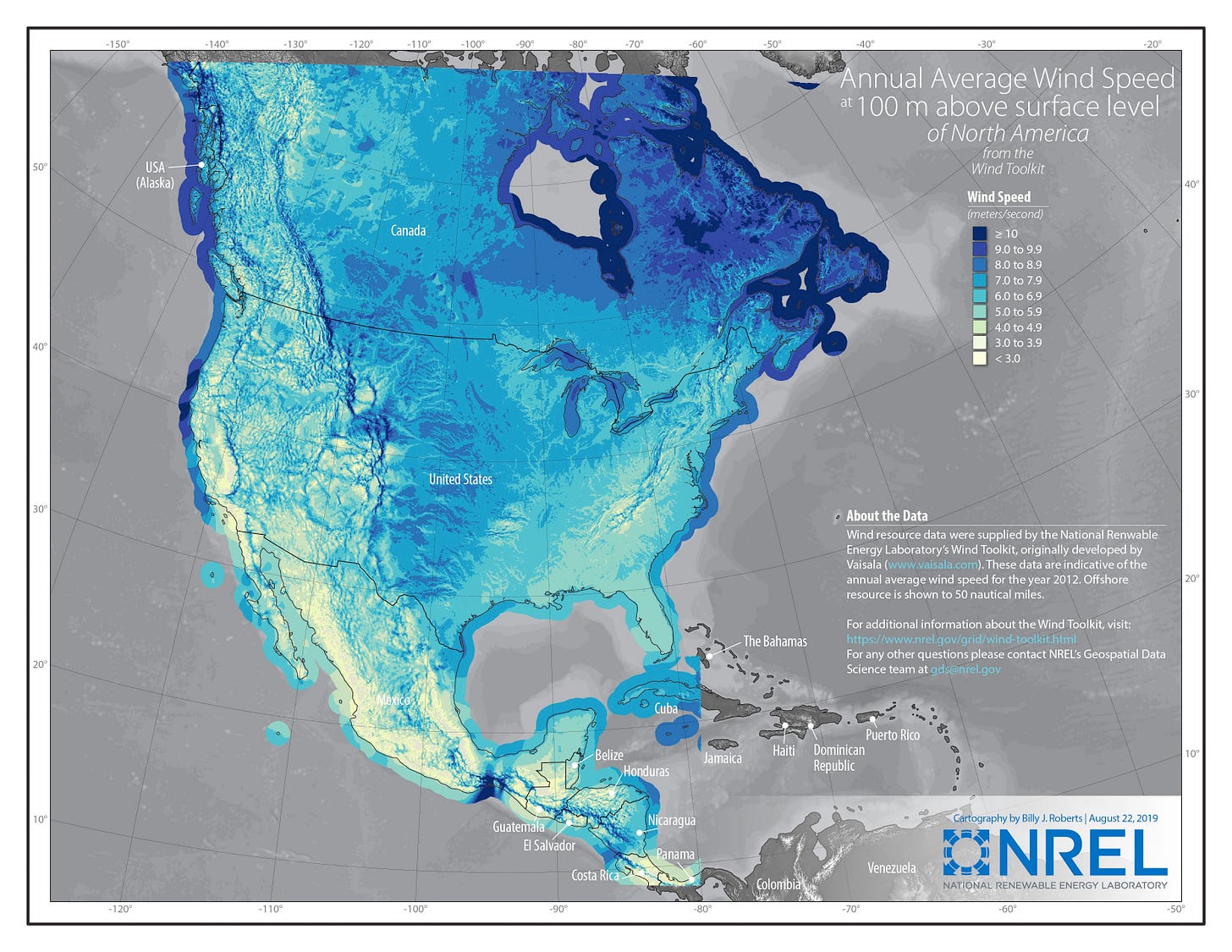


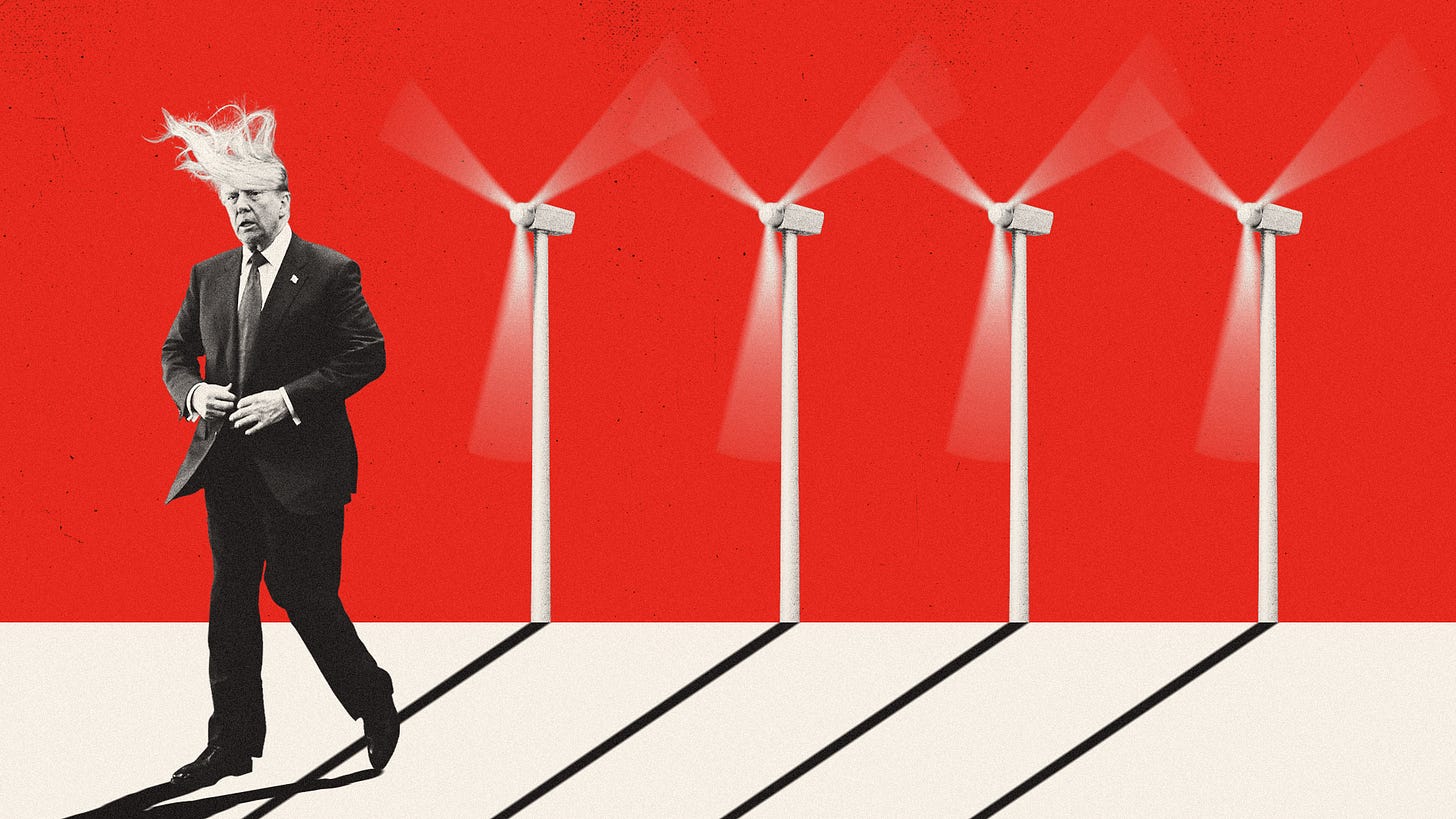





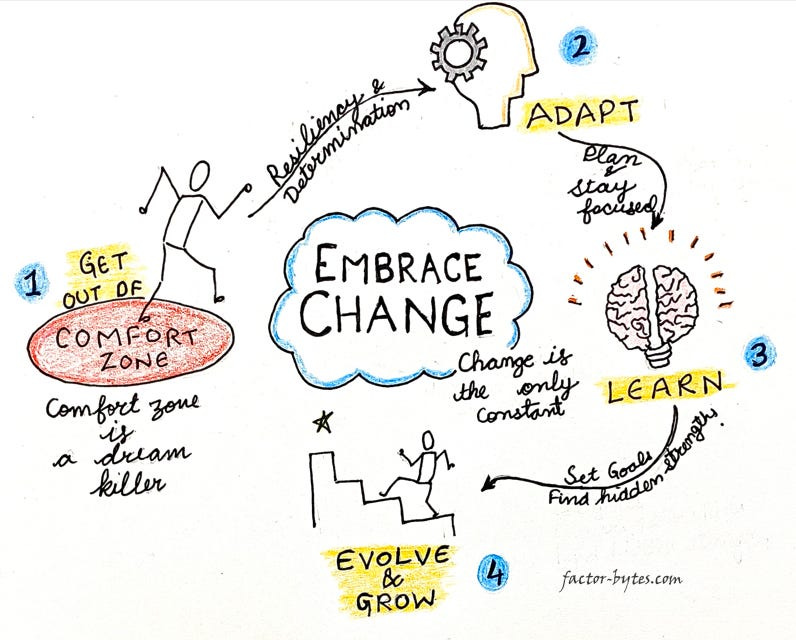
An incredible analysis. A real tour de force. I agree with much, but some perhaps not ...
Like many older Nova Scotians I suffer from Big Fix Syndrome. Having lived through Clairtone, Heavy Water, Bricklin in New Brunswick, the Tomato Adventure in Newfoundland, I am somewhat skeptical when it comes to large projects which promise to transform our modest lives.
If our Premier is the strongest proponent, I wish he might have mentioned it at some point -any point - during his election campaign 6 months ago. Come to think of it, there are many things I wish he might have discussed at the time ....
I fully agree that most of the "problems" with wind are political screed. I also agree it's a great opportunity for NS. I don't think we should export the energy though. I think we should attract and maintain a huge data centre here and power it mainly with wind (and batteries or some other form of storage). It's the value add propositions that give you real wealth. Dal used to have a decent computing centre and with AI coming on it's actually less the programmers you need (which AI can do, at least at the entry level, right now) and more the people that can run a large data centre, and AI itself will need many of these if it's ever to reach full saturation. Right now it's about 1/3 each for North America, Northern Europe (mostly) and China. But not many are located in Canada. I think we should maintain some. If nothing else Covid taught us that it's good to have some of your own stuff.